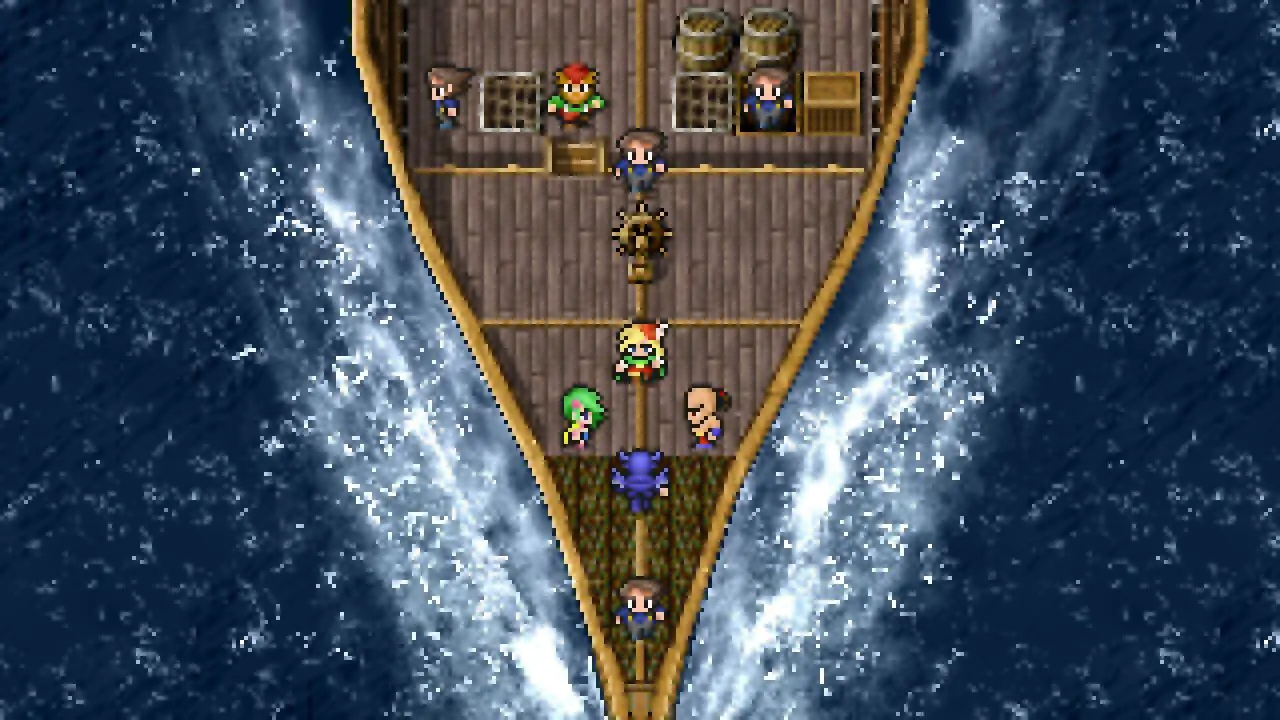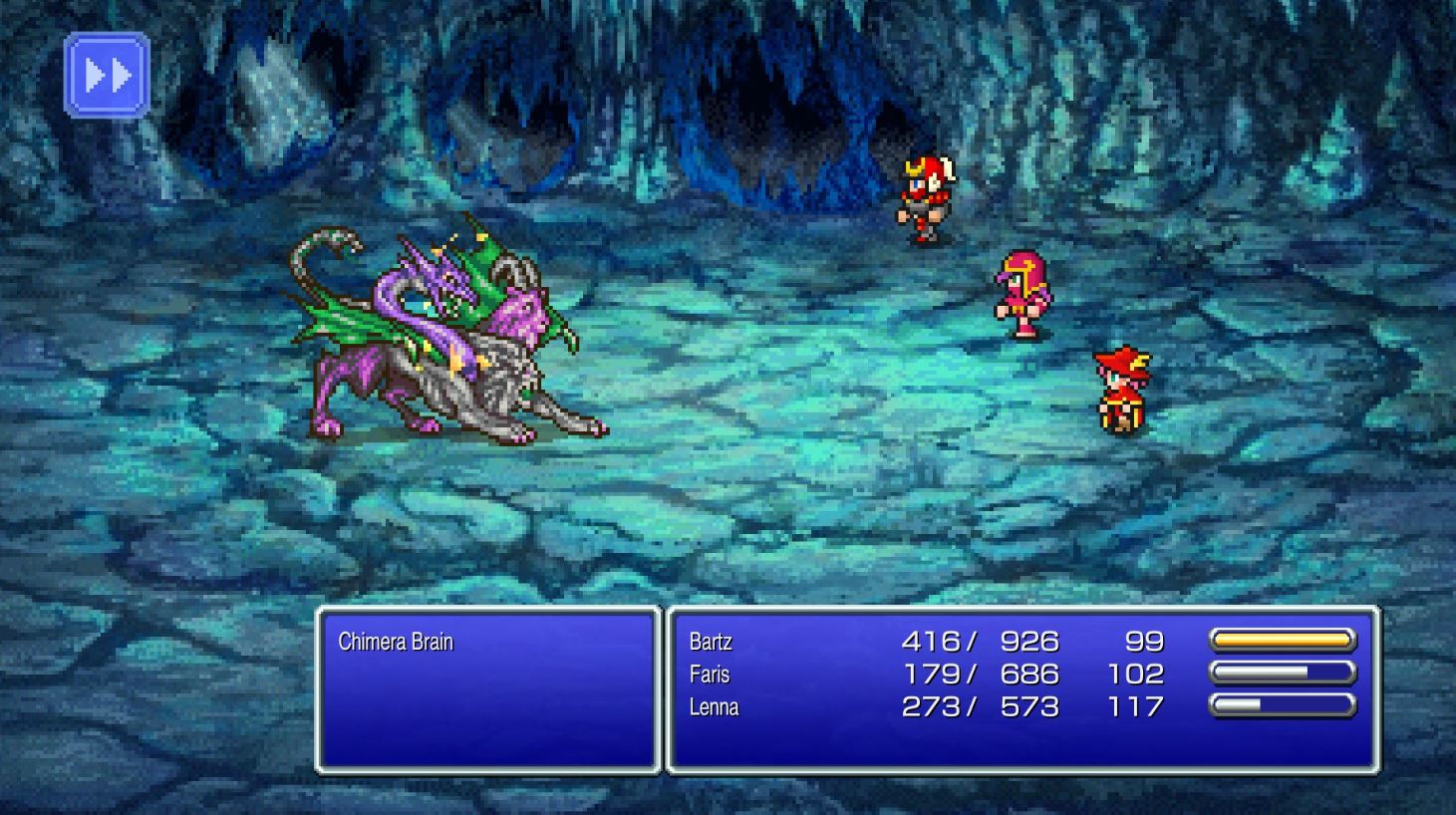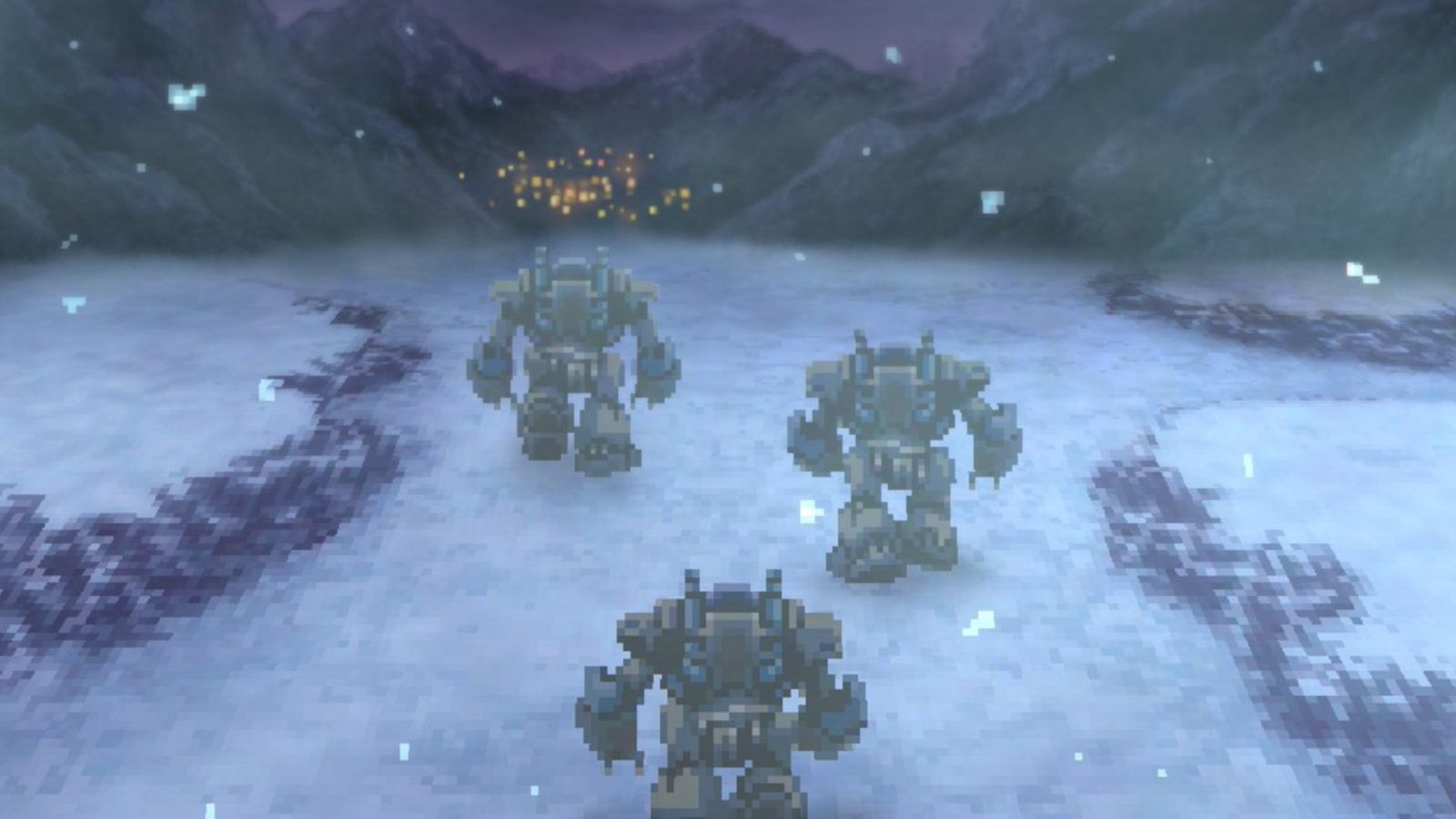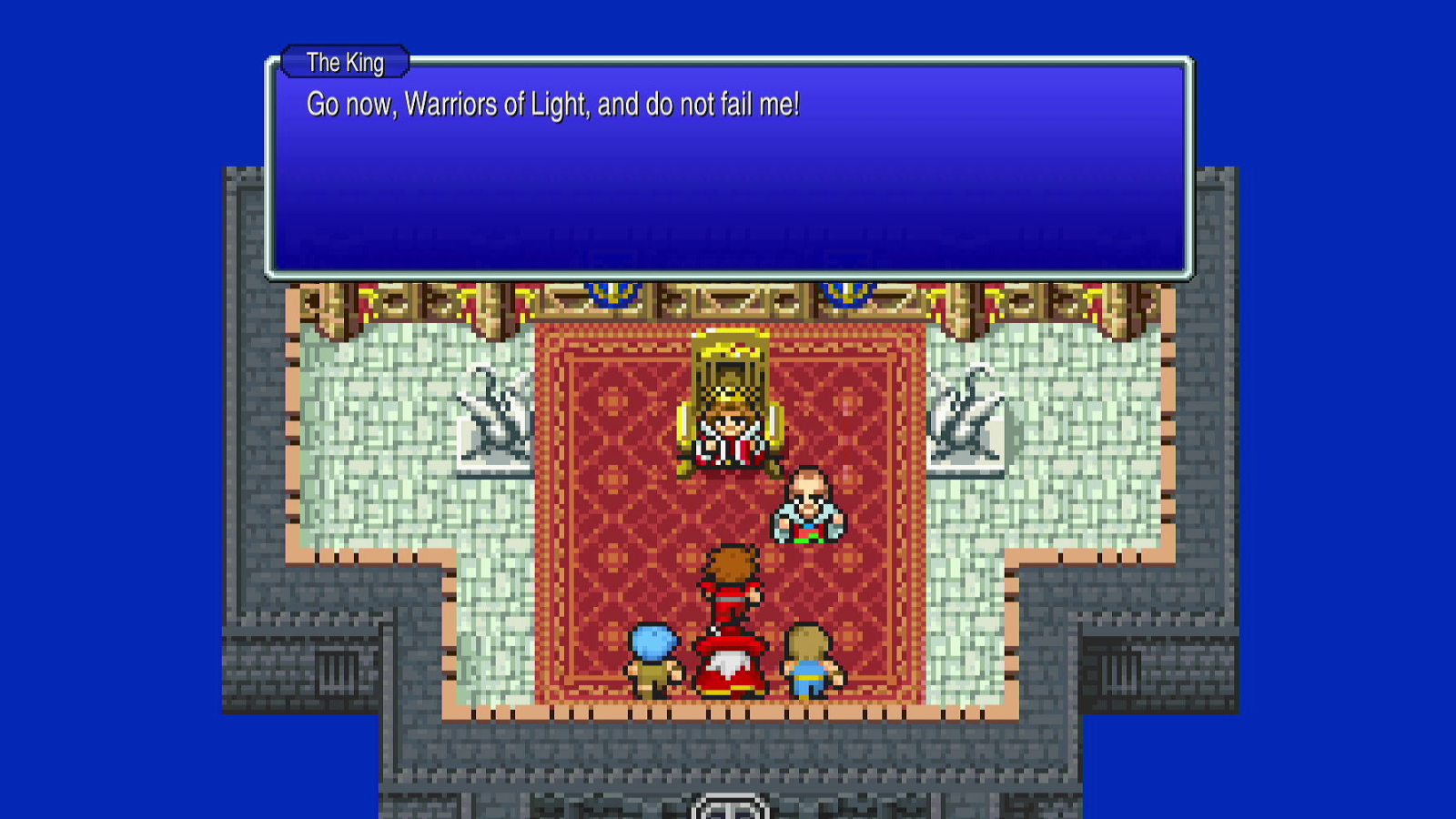The Final Fantasy series is often regarded as one of the best and the most influential JRPG series of all time, and due to its age and massive success, the franchise has garnered several sequels, remasters, remakes, ports, and versions. One of the most significant and prominent remasters is the Final Fantasy I – VI Pixel Remaster series. The collection basically enhances the series’ first 6 pixel games in many ways but specifically with the visuals and sound. The collection was first released on July 28, 2021, for PC and mobile devices, but it has now finally been released for the PS4 and Nintendo Switch for both new and returning fans to enjoy portably or on a big screen. After spending several hours on the collection, especially as someone who never played any of the six games, I can say I’ve enjoyed my time with it despite some of its issues.
![]()
Final Fantasy
The first game in the franchise and the one that started it all. Originally released for the NES, the game follows four warriors of light who emerge with the crystals of light in a world filled with darkness who go on a quest to restore the crystals in order to save the world. The game’s story is quite simplistic with minimal storytelling and dialogue, but is enjoyable nonetheless.
Visually, you can easily tell this remastered version sports better, sharper visuals, even better sound quality, and a great soundtrack. The collection also makes combat much more approachable in all games by including time-saving features like a run button, the ability to save anywhere with quick save, the ability to move more freely, and a button to turn off random encounters when you aren’t ready to fight. One thing to note is that the first game has the least detailed models in the collection, but the background art and level designs are still impressive and nostalgically retro.

Final Fantasy II
The second game in the series and the one Square Enix started to focus more on narrative-wise. This time, the game has named characters with dialogue and an overarching narrative. The story follows childhood friends, Firion, Maria, and Guy, as they join the rebellion against the Palamecia Empire. Along the way, they encounter several allies and enemies and uncover the true extent of the Empire’s nature and plans.
Gameplay-wise, the game features a unique leveling system that rewards players for using specific skills in battle. The game is also challenging, especially in the early stages, but it allows for much experimentation and customization. The visuals are still awe-inspiring, but not much has changed since the first remaster, as it still keeps most elements, such as several background arts that were reused. However, the soundtrack consists of several new and great songs, and the sound quality is still excellent.

Final Fantasy III
The third game and one that has spawned several versions. Unlike its predecessor, Final Fantasy III focuses less on story by letting players control three generic Onion Knights with no names but who occasionally have dialogue, which I thought was an odd direction. The game follows these knights who are orphans chosen by the crystals to become the warriors of light, and they embark on a quest to defeat the evil Djinn and save the world. It’s worth noting that the first half of the collection, including Final Fantasy III, didn’t sport many new innovations or mechanics as several elements, including the art style, models, and UI, are the same or incredibly similar to its predecessor.
Gameplay-wise, however, the game introduces the Job system, which allows players to swap between and customize their characters by assigning different jobs to them, such as the famous White Mage, Black Mage, Monk, Ninja, and Sage jobs. Each job has unique abilities and strengths, such as the types of weapons, armor, and magic they can use.

Final Fantasy IV
In terms of narrative, Final Fantasy IV is my favorite of the collection, as players will notice that a lot more effort was put into the plot. The game follows Cecil, a Dark Knight from the Kingdom of Baron, who one day receives disturbing orders from the king to raid neighboring kingdoms to steal their crystals of light. After doing so, he understandably begins to question the Kingdom’s evil acts, so he, along with his fellow knight Kain, decide to leave the Kingdom’s forces in order to stop its actions. However, on his last job, Cecil unknowingly participates in the destruction of another kingdom and the death of the last summoner’s mother. Feeling guilty, Cecil then decides to protect Raya, the last summoner, as she helps him in his quest to stop the evil king’s actions. Final Fantasy IV features one of the series’ best narratives with several incredible moments.
In terms of gameplay, the game introduces the signature, innovative ATB (Active Time Battle) system that adds a new level of strategy to battles, as players have to consider what the best actions to take are as their action bar fills up alongside the enemy’s with every gameplay decision they make, making speed highly critical. This entry also features a lot of visual changes, as models are a lot more vibrant and detailed, and motions are a lot smoother.

Final Fantasy V
The penultimate game in the collection and one that continues to focus on narrative. The game follows protagonist, Bartz, and his three friends as they attempt to stop the evil Exdeath from taking over the world by destroying the crystals that control nature. This time, the story noticeably has more silly moments than the last game, but this also makes it more approachable to more people while still being entertaining.
Final Fantasy V brings back the job system yet again. This time, however, while switching between jobs, players can carry over skills from previous jobs that have already been mastered. Visually, Final Fantasy V is as vibrant as the last game, and the models are as detailed, with few changes to note.

Final Fantasy VI
The sixth game in the series and the last in the collection. Final Fantasy VI is often regarded as one of the best RPGs of all time, and after playing it, I see why it’s so beloved. The game follows Terra Branford, a young woman who is being used by the Gestahlian Empire as a weapon due to her magical abilities. That is, until she meets Banon and a group of rebels known as the Returners, who rescue her and recruit her to their cause. Along the way, the group encounters more allies, and together, they go on a quest to overthrow the Empire and restore freedom to the world.
The game’s story is perhaps the grandest and most ambitious in the collection, which isn’t surprising as it is the latest in the bundle. The story offers lots of great emotional moments and a diverse cast of endearing characters. The pixel remaster adds new visual effects and cutscenes, making the game more immersive and engaging.
Gameplay-wise, the game returns to the ATB system while introducing an innovative magic system where players can learn spells by equipping magicians. Visually, Final Fantasy VI is the most unique, as backgrounds and art are much more crisp and detailed, and character models are also slightly bigger. The game also allows more enemies to appear in the area for encounters, unlike the previous titles, where they are mostly invisible.
Overall, the great narrative and new gameplay elements make Final Fantasy VI one of the best retro JRPGs I’ve played in a while.

All in all, the Final Fantasy Pixel Remaster collection is excellent. The games are also perfect for a portable platform like Nintendo Switch as it allows players to casually pick up and drop the games at their leisure, and because they are pixel games, they run smoothly even on a Switch. I’d also be remiss if I didn’t mention the extra content the game comes with, which is a gallery of pictures and art and the full soundtrack included in each title, accessible from the main menu.
However, the collection also has some noticeable issues, like how tedious traversal can sometimes be, especially if you’re new to retro games, and the lack of a quest log, which could have been helpful, especially for the earlier games where you’ll sometimes feel lost. The UI is also very bland and is unfortunately present in all the games. Aside from that, the Final Fantasy Pixel Remaster collection sports several great games that can be enjoyed by a wide variety of gamers, especially those who love JRPGs and Final Fantasy.

















